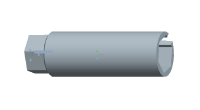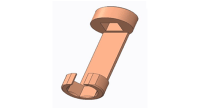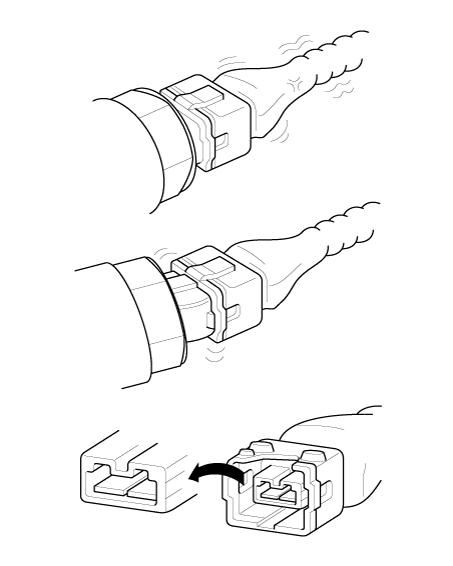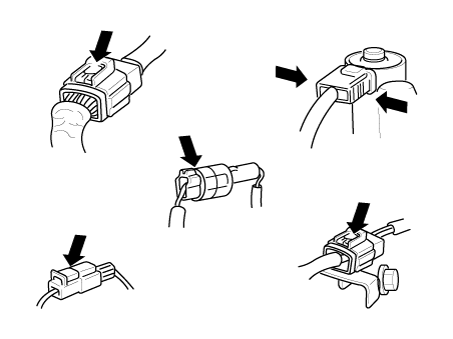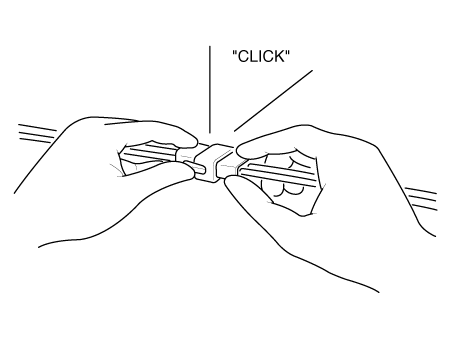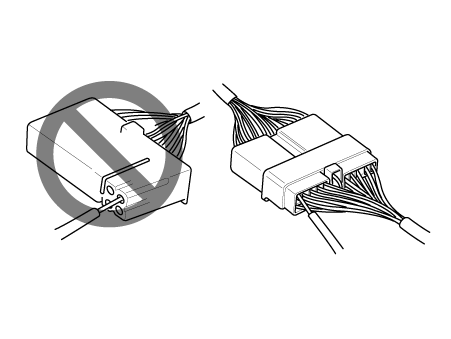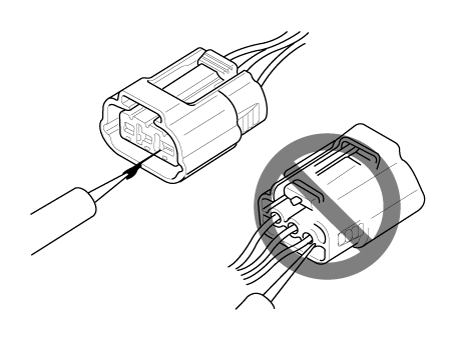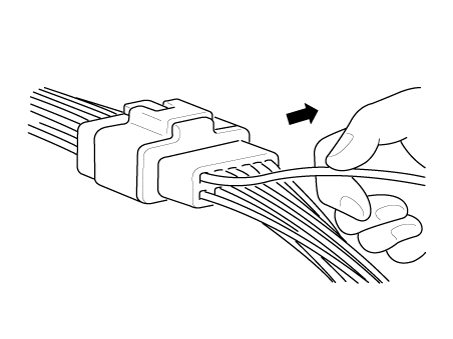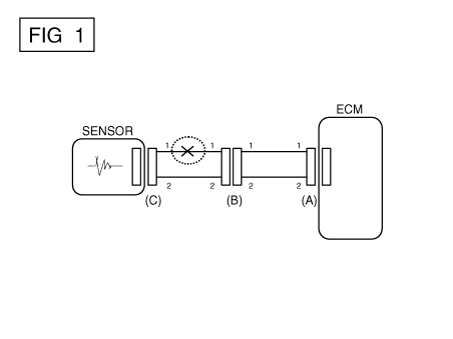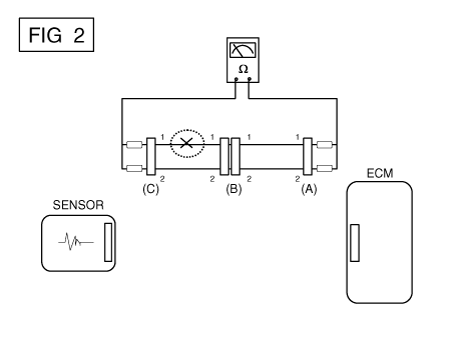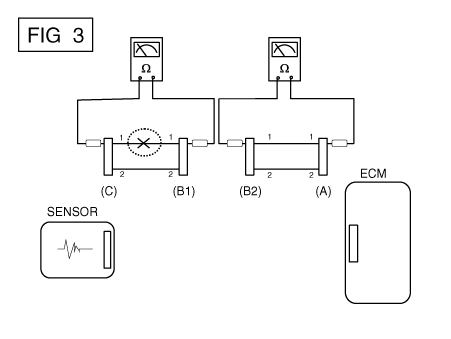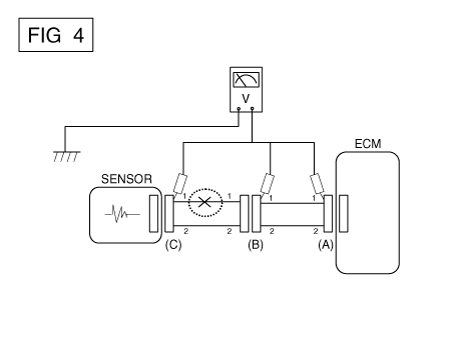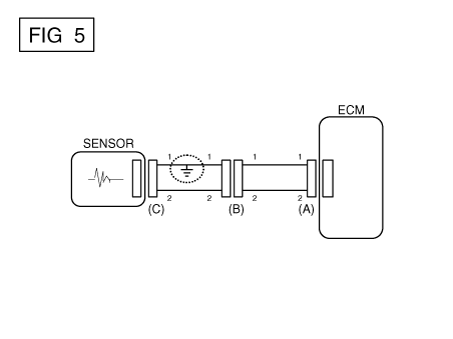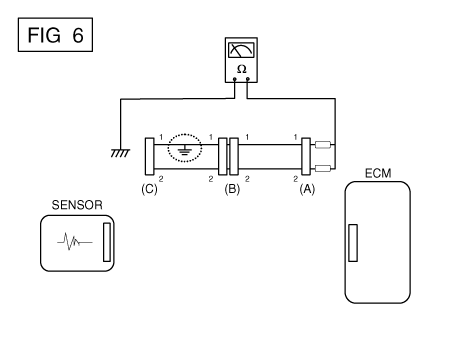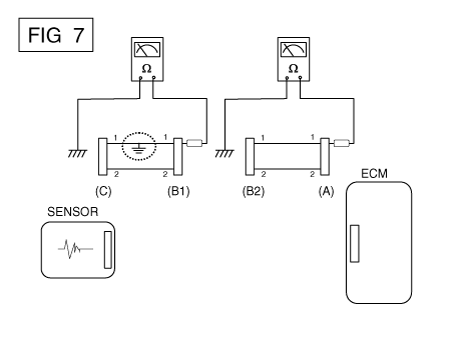Kia Forte: Engine Control / Fuel System
Service data
| Service Data |
| Fuel Delivery System |
|
Items |
Specification |
|
|
Fuel Tank |
Capacity |
50 L (13.2 U.S.gal., 52.8 U.S.qt., 43.9 Imp.qt.) |
|
Fuel Filter |
Type |
Paper type |
|
Fuel Pressure |
Low Pressure Fuel Line |
Over 500 kPa (Over 5.0 bar, Over 5.09 kgf/cm², Over 72.51 psi) |
|
High Pressure Fuel Line |
2.0 - 20.0 MPa (20.4 - 203.9 kgf/cm², 290.1 - 2900.7 psi) |
|
|
Fuel Pump |
Type |
Electrical, in-tank type |
|
Driven by |
Electric motor |
|
|
High Pressure Fuel Pump |
Type |
Mechanical type |
|
Driven by |
Camshaft |
|
| Sensors |
Manifold Absolute Pressure Sensor (MAPS)
▷ Type: Piezo-resistive pressure sensor type
▷ Specification
|
Pressure [kPa (kgf/cm², psi)] |
Output Voltage (V) |
|
32.5 (0.33, 4.71) |
0.5 |
|
284 (2.90, 41.2) |
4.5 |
Intake Air Temperature Sensor (IATS)
▷ Type: Thermistor type
▷ Specification
|
Temperature |
Resistance (kΩ) |
|
|
°C |
°F |
|
|
-40 |
-40 |
40.93 - 48.35 |
|
-20 |
-4 |
13.89 - 16.03 |
|
0 |
32 |
5.38 - 6.09 |
|
10 |
50 |
3.48 - 3.90 |
|
20 |
68 |
2.31 - 2.57 |
|
40 |
104 |
1.08 - 1.21 |
|
50 |
122 |
1.56 - 1.74 |
|
60 |
140 |
0.54 - 0.62 |
|
80 |
176 |
0.29 - 0.34 |
Ambient Temperature Sensor (ATS)
▷ Type: Thermistor type
▷ Specification
|
Temperature[⁰C(⁰F)] |
Resistance(kΩ) |
|
-40(-40) |
811.1 - 956.8 |
|
-20(-4) |
255.6 - 287.7 |
|
0(32) |
91.5 - 98.8 |
|
20(68) |
36.6 - 38.0 |
|
30(86) |
23.8 - 24.7 |
|
40(104) |
15.7 - 16.6 |
|
50(122) |
10.6 - 11.3 |
|
60(140) |
7.2 - 7.9 |
|
80(176) |
3.6 - 4.0 |
Boost Pressure Sensor (BPS)
▷ Type: Piezo-resistive pressure sensor type
▷ Specification
|
Pressure [kPa (kg/cm² / psi)] |
Resistance (kΩ) |
|
32.5 (0.33, 4.71) |
0.5 |
|
284 (2.90, 41.19) |
4.5 |
Engine Coolant Temperature Sensor (ECTS)
▷ Type: Thermistor type
▷ Specification
|
Temperature |
Resistance (kΩ) |
|
|
°C |
°F |
|
|
-40 |
-40 |
48.14 |
|
-20 |
-4 |
14.13 - 16.83 |
|
0 |
32 |
5.79 |
|
20 |
68 |
2.31 - 2.59 |
|
40 |
104 |
1.15 |
|
60 |
140 |
0.59 |
|
80 |
176 |
0.32 |
Throttle Position Sensor (TPS) [integrated into ETC module]
▷ Type: Hall IC Non-contact sensor type
▷ Specification
|
Throttle angle(°) |
Output Voltage (V) |
|
|
TPS1 |
TPS2 |
|
|
0 |
0.5 |
4.5 |
|
10 |
0.96 |
4.05 |
|
20 |
1.41 |
3.59 |
|
30 |
1.87 |
3.14 |
|
40 |
2.32 |
2.68 |
|
50 |
2.78 |
2.23 |
|
60 |
3.23 |
1.77 |
|
70 |
3.69 |
1.32 |
|
80 |
4.14 |
0.86 |
|
90 |
4.6 |
0.41 |
|
98 |
4.65 |
0.35 |
|
C.T (0) |
0.5 |
4.5 |
|
W.O.T (86) |
4.41 |
0.59 |
Crankshaft Position Sensor (CKPS)
▷ Type: Magnetic field sensitive Type
▷ Specification
|
Item |
Specification |
|
Coil Resistance (Ω) |
774 - 946 [20°C (68°F)] |
Camshaft Position Sensor (CMPS)
▷ Type: Hall effect type
Knock Sensor (KS)
▷ Type: Piezo-electricity type
▷ Specification
|
Item |
Specification |
|
Resistance(MΩ) |
4.87 |
Heated Oxygen Sensor (HO2S) [Bank 1/Sensor 1]
▷ Type: Zirconia (ZrO2) [Linear] Type
▷ Specification
|
Item |
Specification |
|
Heater Resistance (Ω) |
2.4 - 4.0 [20°C(68°F)] |
Heated Oxygen Sensor (HO2S) [Bank 1/Sensor 2]
▷ Type: Zirconia (ZrO2) [Binary] Type
▷ Specification
|
A/F Ratio (λ) |
Output Voltage(V) |
|
RICH |
0.6 - 1.0 |
|
LEAN |
0 - 0.4 |
|
Item |
Specification |
|
Heater Resistance (Ω) |
Approx. 9.0 [20°C(68°F)] |
Rail Pressure Sensor (RPS)
▷ Type: Piezo-electricity type
▷ Specification
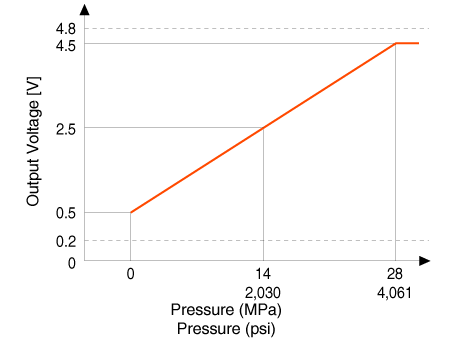
Accelerator Position Sensor (APS)
▷ Type: Variable resistor type
▷ Specification
|
Accelerator Position |
Output Voltage (V) |
|
|
APS1 |
APS2 |
|
|
C.T |
0.7 - 0.8 |
0.33 - 0.43 |
|
W.O.T |
3.98 - 4.22 |
1.93 - 2.17 |
| Actuators |
Injector
▷ Specification
|
Item |
Specification |
|
Coil Resistance (Ω) |
1.5 ± 0.075 [20°C(68°F)] |
ETC Motor [integrated into ETC Module]
▷ Specification
|
Item |
Specification |
|
Coil Resistance (Ω) |
1.38 [20°C(68°F)] |
Purge Control Solenoid Valve (PCSV)
▷ Specification
|
Item |
Specification |
|
Coil Resistance (Ω) |
18.5 - 22.5 [23°C(73.4°F)] |
CVVT Oil Control Valve (OCV)
▷ Specification
|
Item |
Specification |
|
Coil Resistance (Ω) |
6.9 - 7.9 [20°C(68°F)] |
Fuel Pressure Control Valve (FPCV)
▷ Specification
|
Item |
Specification |
|
Coil Resistance (Ω) |
0.5 [20°C(68°F)] |
Ignition Coil
▷ Type: Stick type
▷ Specification
|
Item |
Specification |
|
Primary Coil Resistance (Ω) |
0.56 ± 10%[20°C(68°F)] |
|
Secendary Coil Resistance (kΩ) |
2.0 ± 15%[20°C(68°F)] |
RCV Control Solenoid Valve
▷ Specification
|
Item |
Specification |
|
Coil Resistance(Ω) |
28.3 - 31.1 [20°C(68°F)] |
Electric Waste Gate Actuator (EWGA)
▷ Specification
|
Item |
Specification |
|
|
Motor , |
Supply Voltage (V) |
13.5 |
|
Supply Voltage Range (V) |
9 - 16 |
|
|
Max. Current (A) |
< 8.5 |
|
|
Type |
DC Motor |
|
|
Sensor |
Type |
Hall-effect, Non-contact |
|
Supply Voltage (V) |
4.9 - 5.1 |
|
|
Pin |
6 |
|
| Service Standard |
|
Item |
Specification |
||
|
Ignition Timing (°) |
BTDC 2 ± 10 |
||
|
Idle Speed (rpm) |
A/C OFF |
Neutral, N, P-range |
630 ± 100 |
|
D-range |
630 ± 100 |
||
|
A/C ON |
Neutral, N, P-range |
630 ± 100 |
|
|
D-range |
630 ± 100 |
||
Tightening torque
| Tightening Torques |
Engine Control System
|
Item |
kgf·m |
N·m |
lb·ft |
|
ECM installation nut |
1.0 - 1.2 |
9.8 - 11.8 |
7.2 - 8.7 |
|
ECM bracket installation bolt |
1.0 - 1.2 |
9.8 - 11.8 |
7.2 - 8.7 |
|
Manifold absolute pressure sensor installation bolt |
1.0 - 1.2 |
9.8 - 11.8 |
7.2 - 8.7 |
|
Intake air temperature sensor installation bolt |
1.0 - 1.2 |
9.8 - 11.8 |
7.2 - 8.7 |
|
Boost pressure sensor installation bolt |
1.0 - 1.2 |
9.8 - 11.8 |
7.2 - 8.7 |
|
Engine Coolant Temperature Sensor installation |
2.0 - 4.0 |
19.6 - 39.2 |
14.4 - 28.9 |
|
Crankshaft position sensor installation bolt |
0.8 - 1.2 |
7.8 - 11.8 |
5.8 - 8.7 |
|
Camshaft position sensor (Bank 1 / Intake) installation bolt |
0.8 - 1.2 |
7.8 - 11.8 |
5.8 - 8.7 |
|
Camshaft position sensor (Bank 1 / Exhaust) installation bolt |
0.8 - 1.2 |
7.8 - 11.8 |
5.8 - 8.7 |
|
Knock sensor installation bolt |
1.9 - 2.5 |
18.6 - 24.5 |
13.7 - 18.1 |
|
Heated oxygen sensor (Bank 1 / sensor 1) installation |
4.0 - 5.0 |
39.2 - 49.1 |
28.9 - 36.2 |
|
Heated oxygen sensor (Bank 1 / sensor 2) installation |
4.0 - 5.0 |
39.2 - 49.1 |
28.9 - 36.2 |
|
Rail pressure sensor installation |
3.0 - 3.5 |
29.4 - 34.3 |
21.7 - 25.3 |
|
Electronic throttle body installation bolt |
1.0 - 1.2 |
9.8 - 11.8 |
7.2 - 8.7 |
|
Purge control solenoid valve bracket installation bolt |
1.0 - 1.2 |
9.8 - 11.8 |
7.2 - 8.7 |
|
CVVT oil control valve (Bank 1 / Intake) installation bolt |
1.0 - 1.2 |
9.8 - 11.8 |
7.2 - 8.7 |
|
CVVT oil control valve (Bank 1 / Exhaust) installation bolt |
1.0 - 1.2 |
9.8 - 11.8 |
7.2 - 8.7 |
Fuel Delivery System
|
Item |
kgf·m |
N·m |
lb·ft |
|
Fuel tank installation nut |
4.0 - 5.5 |
39.2 - 54.0 |
28.9 - 39.8 |
|
Filler-neck assembly bracket installation bolt |
0.9 - 1.0 |
8.8 - 9.8 |
6.5 - 7.2 |
|
Accelerator pedal module installation nut |
1.3 - 1.6 |
12.8 - 15.6 |
9.4 - 11.5 |
|
Delivery pipe installation bolt |
1.9 - 2.4 |
18.6 - 23.5 |
13.7 - 17.4 |
|
High pressure fuel pump installation bolt |
1.3 - 1.5 |
12.8 - 14.7 |
9.4 - 10.9 |
|
High pressure fuel pipe installation nut |
2.7 - 3.3 |
26.5 - 32.4 |
19.5 - 23.9 |
|
High pressure fuel pipe function block installation bolt |
1.0 - 1.2 |
9.8 - 11.8 |
7.2 - 8.7 |
Special service tools
| Special Service Tools |
|
Tool Name / Number |
Illustration |
Description |
|
Fuel pressure gauge 09353-24100 |
|
Used for measuring the pressure in fuel line |
|
Fuel pressure gauge adapter 0K353-D4100 |
|
Used for connecting between high pressure fuel pump and low pressure fuel
feed tube to measure the pressure in fuel line |
|
Heated oxygen sensor socket wrench 09392-1Y100 |
|
Used for removing / installing heated oxygen sensor ※SST 09392-2H100 also can be used |
|
Torque wrench socket 09314-3Q100 or 09314-27130(19mm) |
|
Used for removing / installing high pressure fuel pipe |
|
Injector combustion seal guide & sizing tool 09353-2B000 |
|
Used for installing injector combustion seal on injector |
Troubleshooting
| Basic Troubleshooting |
Basic Troubleshooting Guide
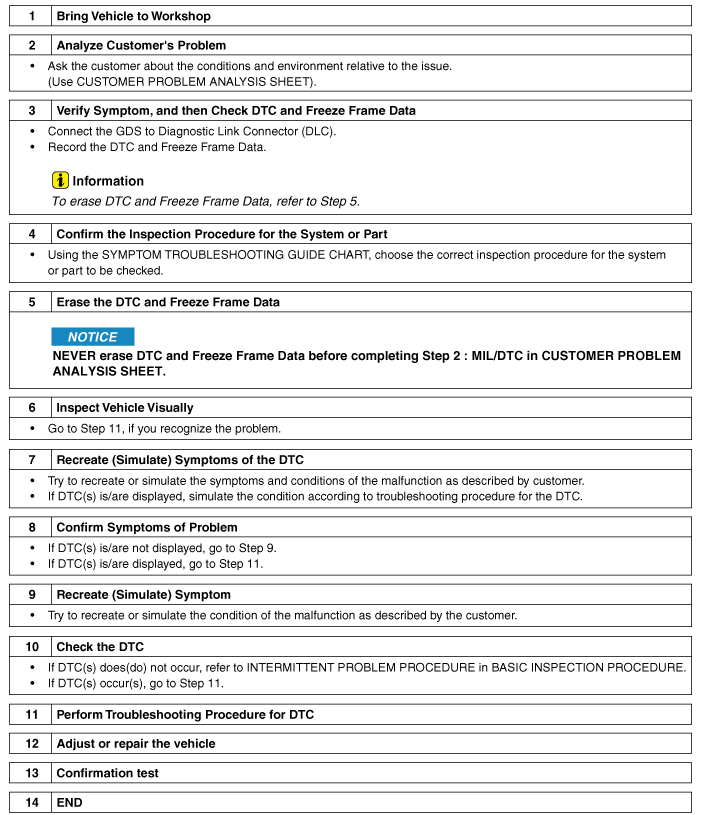
Customer Problem Analysis Sheet

Basic Inspection Procedure
Measuring Condition of Electronic Parts' Resistance
The measured resistance at high temperature after vehicle running may be high or low. So all resistance must be measured at ambient temperature (20°C, 68°F), unless stated otherwise.
The measured resistance in except for ambient temperature (20°C, 68°F) is reference value. |
Intermittent Problem Inspection Procedure
Sometimes the most difficult case in troubleshooting is when a problem symptom occurs but does not occur again during testing. An example would be if a problem appears only when the vehicle is cold but has not appeared when warm. In this case, the technician should thoroughly make out a "Customer Problem Analysis Sheet" and recreate (simulate) the environment and condition which occurred when the vehicle was having the issue.
| 1. |
Clear Diagnostic Trouble Code (DTC). |
| 2. |
Inspect connector connection, and check terminal for poor connections, loose wires, bent, broken or corroded pins, and then verify that the connectors are always securely fastened.
|
| 3. |
Slightly shake the connector and wiring harness vertically and horizontally. |
| 4. |
Repair or replace the component that has a problem. |
| 5. |
Verify that the problem has disappeared with the road test. |
● Simulating Vibration
| a. |
Sensors and Actuators : Slightly vibrate sensors, actuators or relays with finger.
|
| b. |
Connectors and Harness : Lightly shake the connector and wiring harness vertically and then horizontally. |
● Simulating Heat
| a. |
Heat components suspected of causing the malfunction with a hair dryer or other heat source.
|
● Simulating Water Sprinkling
| a. |
Sprinkle water onto vehicle to simulate a rainy day or a high humidity condition.
|
● Simulating Electrical Load
| a. |
Turn on all electrical systems to simulate excessive electrical loads (Radios, fans, lights, rear window defogger, etc.). |
Connector Inspection Procedure
| 1. |
Handling of Connector
|
| 2. |
Checking Point for Connector
|
| 3. |
Repair Method of Connector Terminal
|
Wire Harness Inspection Procedure
| 1. |
Before removing the wire harness, check the wire harness position and crimping in order to restore it correctly. |
| 2. |
Check whether the wire harness is twisted, pulled or loosened. |
| 3. |
Check whether the temperature of the wire harness is abnormally high. |
| 4. |
Check whether the wire harness is rotating, moving or vibrating against the sharp edge of a part. |
| 5. |
Check the connection between the wire harness and any installed part. |
| 6. |
If the covering of wire harness is damaged; secure, repair or replace the harness. |
Electrical Circuit Inspection Procedure
● Check Open Circuit
| 1. |
Procedures for Open Circuit
If an open circuit occurs (as seen in [FIG. 1]), it can be found by performing Step 2 (Continuity Check Method) or Step 3 (Voltage Check Method) as shown below.
|
| 2. |
Continuity Check Method
|
| 3. |
Voltage Check Method
|
● Check Short Circuit
| 1. |
Test Method for Short to Ground Circuit
If short to ground circuit occurs as shown in [FIG. 5], the broken point can be found by performing Step 2 (Continuity Check Method with Chassis Ground) as shown below.
|
| 2. |
Continuity Check Method (with Chassis Ground)
|
● Testing For Voltage Drop
This test checks for voltage drop along a wire, or through a connection orswitch.
| A. |
Connect the positive lead of a voltmeter to the end of the wire (or to the side of the connector or switch) closest to the battery. |
| B. |
Connect the negative lead to the other end of the wire. (or the other side of the connector or switch) |
| C. |
Operate the circuit. |
| D. |
The voltmeter will show the difference in voltage between the two points. A difference, or drop of more than 0.1 volts (50mV in 5V circuits), may indicate a problem. Check the circuit for loose or dirty connections. |
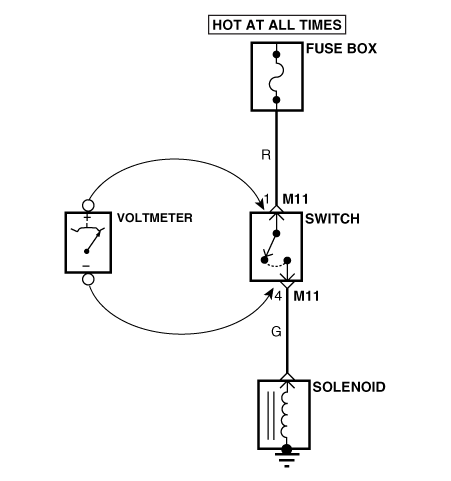
Symptom Troubleshooting Guide Chart
|
Main symptom |
Diagnostic procedure |
Also check for |
||||||||||||||||||||||
|
Unable to start (Engine does not turn over) |
|
|
||||||||||||||||||||||
|
Unable to start (Incomplete combustion) |
|
|
||||||||||||||||||||||
|
Difficult to start |
|
|
||||||||||||||||||||||
|
Poor idling (Rough, unstable or incorrect Idle) |
|
|
||||||||||||||||||||||
|
Engine stall |
|
|
||||||||||||||||||||||
|
Poor driving (Surge) |
|
|
||||||||||||||||||||||
|
Knocking |
|
|
||||||||||||||||||||||
|
Poor fuel economy |
|
|
||||||||||||||||||||||
|
Hard to refuel (Overflow during refueling) |
|
|
- Engine Control System
- Engine Control Module (ECM)
- ETC (Electronic Throttle Control) System
- Manifold Absolute Pressure Sensor (MAPS)
- Intake Air Temperature Sensor (IATS)
- Ambient Temperature Sensor (ATS)
- Boost Pressure Sensor (BPS)
- Engine Coolant Temperature Sensor (ECTS)
- Crankshaft Position Sensor (CKPS)
- Camshaft Position Sensor (CMPS)
- Knock Sensor (KS)
- Heated Oxygen Sensor (HO2S)
- Rail Pressure Sensor (RPS)
- Accelerator Position Sensor (APS)
- Injector
 CVVT (Continuously Variable Valve Timing) System
CVVT (Continuously Variable Valve Timing) System
Description and operation
Description
Continuous Variable Valve Timing (CVVT) system advances or retards the valve
timing of the intake and exhaust valve in accordance with the ECM con ...
 Engine Control System
Engine Control System
Components and components location
Components Location
1. Engine Control Module (ECM)
2. Manifold Absolute Pressure Sensor (MAPS)
3. Intake Air Temperature Sensor ...
Other information:
Kia Forte 2019-2025 (BD) Owners Manual: Transmitter precautions
The transmitter (or smart key) will not work if any of following occurs: The ignition key is in the ignition switch. You exceed the operating distance limit (about 30 m [90 feet]). The battery in the transmitter (or smart key) is weak. Other vehicles or objects may be blockin ...
Kia Forte 2019-2025 (BD) Owners Manual: Changing tires
1. Park on a level surface and apply the parking brake firmly. 2. Place the transmission shift lever in P (Park) with Dual clutch transmission/ Intelligent variable transmission and R (Reverse) with manual transmission. 3. Activate the hazard warning flashers. 4. Remove the wheel ...



